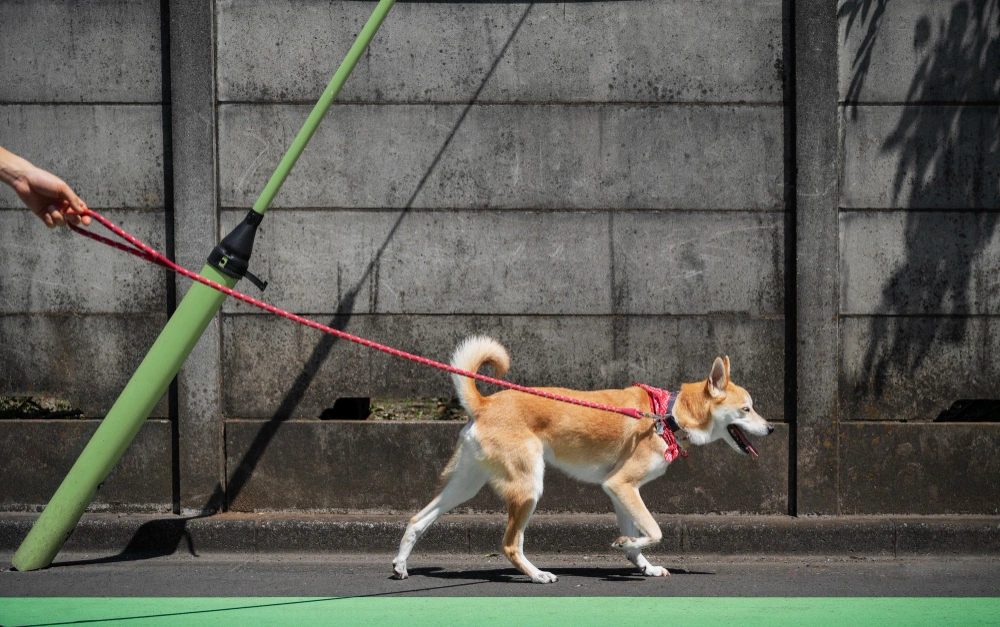Walking your dog should be one of life’s simple pleasures, but if you are dealing with a strong puller, it can quickly turn into a battle of wills that leaves you exhausted and frustrated. Finding the best leash for dogs that pull is not just about comfort, it is about safety, training effectiveness, and creating enjoyable walks for both you and your furry companion.
“A good leash does not just connect you to your dog, it connects you to better communication, training, and countless enjoyable adventures together.”
The good news is that the right leash can transform your walking experience from a daily struggle into quality bonding time. Whether you are dealing with an excited puppy who has not learned leash manners or a powerful adult dog with ingrained pulling habits, choosing the best leash for a pulling dog combined with proper training techniques can make all the difference.
Understanding Why Dogs Pull on Leash
Before diving into leash solutions, it is essential to understand why dogs pull in the first place. Most pulling behavior stems from excitement, curiosity, or simply not understanding leash etiquette. Dogs naturally walk faster than humans and are driven by their desire to explore scents, sights, and sounds in their environment.
Common reasons dogs pull:
- Natural curiosity and exploration drive
- Excitement about walks and outdoor adventures
- Lack of proper leash training from puppyhood
- Learned behavior (pulling gets them where they want faster)
- Anxiety or overexcitement in new environments
- Breed-specific traits and working instincts
Large breed dogs, high-energy breeds, and young dogs are particularly prone to pulling behavior. Breeds like German Shepherds, Labrador Retrievers, and Huskies were bred for work and naturally have strong pulling instincts that need to be redirected through proper training and equipment.
Types of Leashes for Pulling Dogs
Front-Clip Harness Systems
The best dog leash for pulling dogs often works in conjunction with a front-clip harness. These systems redirect your dog’s forward momentum to the side, naturally discouraging pulling without causing discomfort. When combined with a sturdy leash, front-clip harnesses provide excellent control while being gentle on your dog’s neck and throat.
Look for harnesses made from sustainable materials like recycled polyester or organic cotton. Many eco-conscious brands now offer durable front-clip harnesses that perform excellently while minimizing environmental impact.
No-Pull Training Leashes
Specialized training leashes designed for pullers often feature dual attachment points and additional control mechanisms. These best leash for dogs that pull options typically include a traffic handle near the collar attachment for close control and a longer handle for normal walking.
Key features of training leashes:
- Dual handles for versatile control
- Reflective stitching for night visibility
- Padded handles for comfort during training
- Heavy-duty hardware rated for strong pullers
- Adjustable length options
The dual-handle design allows you to maintain control in crowded areas while giving your dog freedom to explore when appropriate. Many training leashes now incorporate sustainable materials and manufacturing processes.
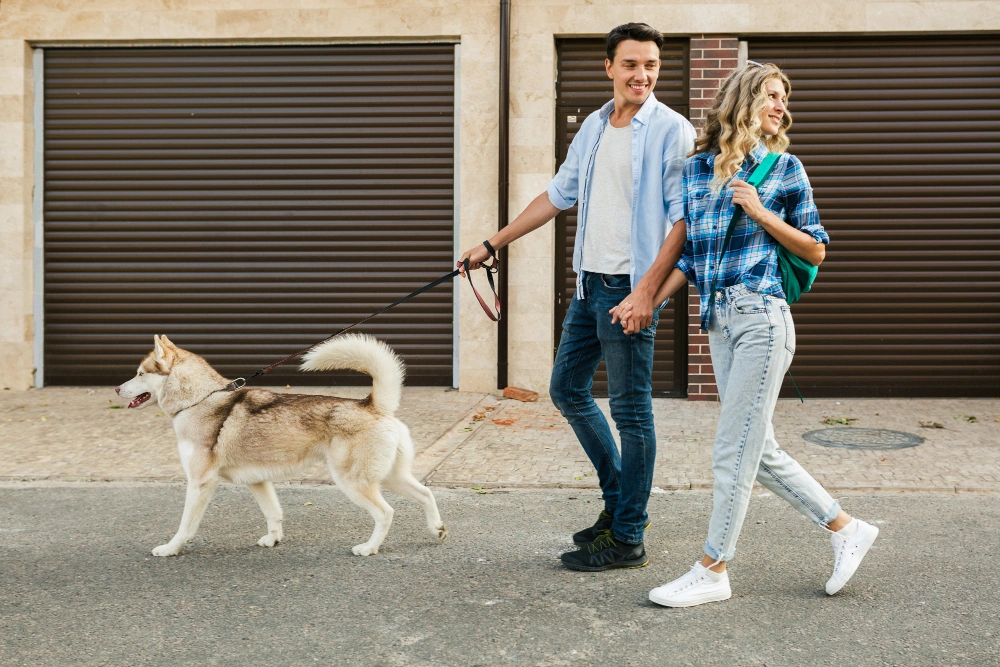
Retractable Leash Considerations
While best retractable dog leash options can provide dogs with more freedom to explore, they are generally not recommended for dogs who pull. Retractable leashes can actually encourage pulling behavior by rewarding it with more line.
“Retractable leashes teach dogs that pulling equals more freedom, the opposite of what we want to achieve with pullers.”
However, some high-quality retractable leashes with strong braking systems can work for trained dogs who have learned not to pull. If you choose a retractable leash, look for models with ergonomic handles, reliable braking mechanisms, and sustainable materials. Use them only after your dog has mastered basic leash manners with a standard leash.
Key Features to Look for in Anti-Pull Leashes
Length and Width Considerations
The ideal length for the best leash for a pulling dog is typically 6 feet, providing enough freedom for your dog to explore while maintaining control. Shorter leashes can increase tension and pulling, while longer leashes make it harder to guide your dog’s behavior.
Leash width guidelines:
- Small dogs (under 25 lbs): 1/2 to 5/8 inch width
- Medium dogs (25-60 lbs): 5/8 to 3/4 inch width
- Large dogs (60-90 lbs): 3/4 to 1 inch width
- Extra large dogs (90+ lbs): 1 inch or wider
Handle Design and Comfort
A comfortable handle is crucial for the best dog leash for pulling dogs since you will be maintaining steady pressure during training. Look for padded handles or ergonomic designs that won’t cut into your hands during longer walks.
Some leashes feature multiple handle positions, allowing you to adjust your grip based on the situation. Traffic handles positioned closer to your dog provide maximum control in crowded areas.
Material Durability and Sustainability
When choosing the best leash for dogs that pull, material selection impacts both performance and environmental responsibility.
Sustainable material options:
- Recycled Materials: Leashes made from recycled plastic bottles reduce waste
- Organic Fibers: Hemp and organic cotton offer biodegradable alternatives
- Bamboo Fiber: Naturally antimicrobial and renewable resource
- Cork Components: Sustainable and naturally water-resistant
- Recycled Rubber: Durable and eco-friendly for hardware components
“Choosing eco-friendly leash materials does not mean compromising on strength, many sustainable options outperform traditional materials in durability tests.”
Training Techniques to Use with Anti-Pull Leashes
Positive Reinforcement Methods
The most effective approach to reducing pulling combines the right equipment with positive training techniques. Reward your dog with treats, praise, or play when they walk beside you without pulling. This creates positive associations with proper leash behavior.
Training success tips:
- Start in low-distraction environments
- Use high-value treats your dog loves
- Keep training sessions short (10-15 minutes)
- Practice daily for consistency
- Celebrate small improvements
- Stay patient and positive
Direction Changes and Stops
When your dog starts pulling, immediately stop or change direction. This teaches them that pulling does not lead to forward progress. Use the control provided by your best leash for a pulling dog to guide these redirections gently but firmly.
Practice the “red light, green light” technique where forward movement only continues when the leash is slack. This helps dogs understand that pulling stops progress while loose-leash walking continues the adventure.
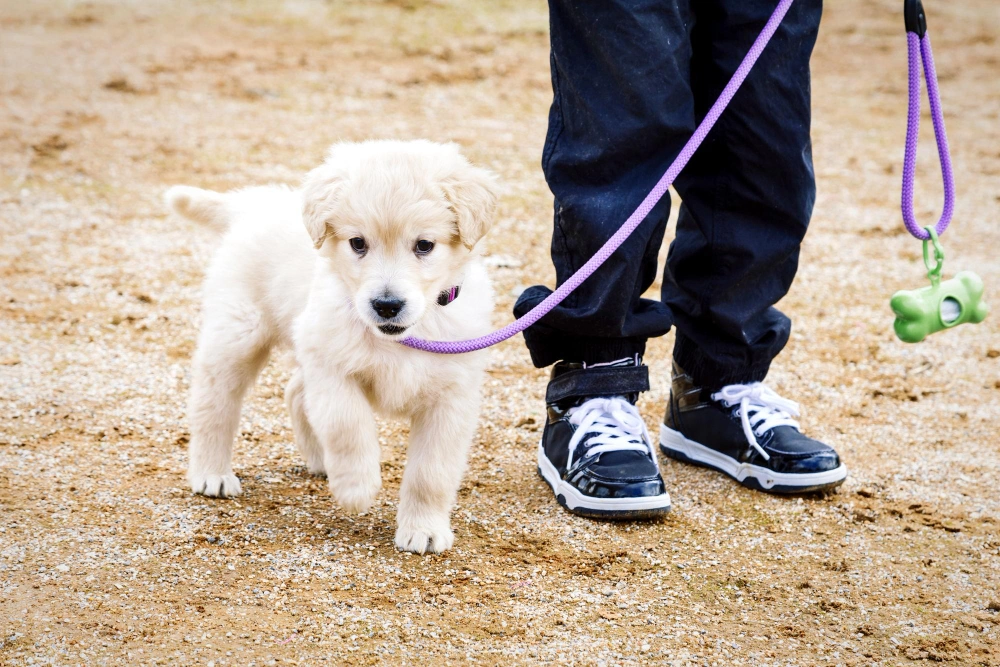
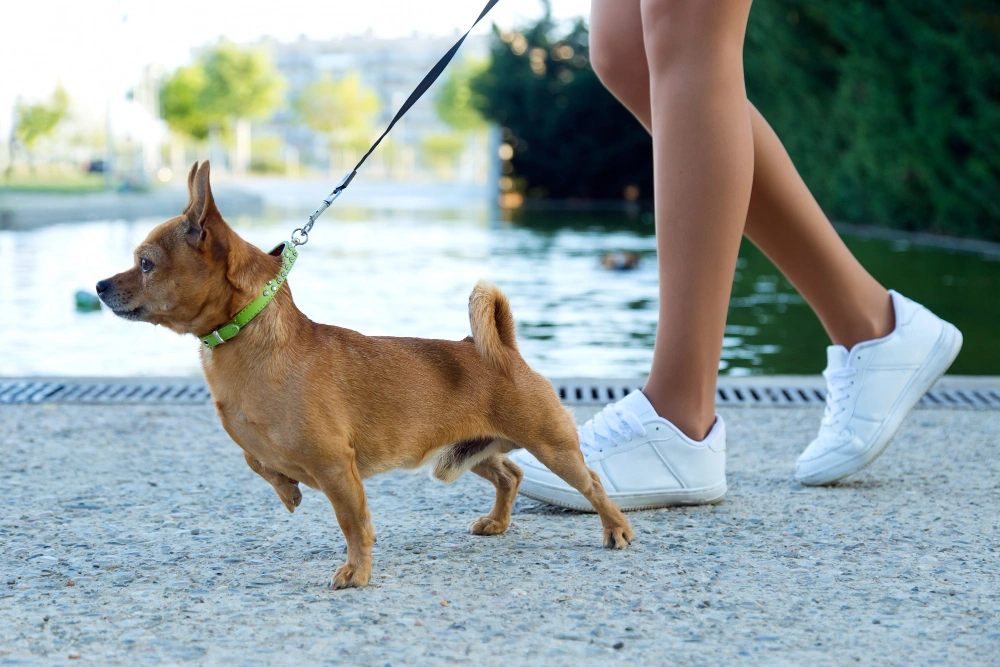
Safety Considerations for Strong Pullers
Neck and Throat Protection
Avoid using traditional collars with strong pullers, as they can damage the trachea and neck structures. The best leash for dogs that pull should always be paired with a harness or head collar that distributes pressure more evenly.
Warning signs to watch for:
- Coughing or gagging during walks
- Red marks around the neck area
- Difficulty breathing or wheezing
- Reluctance to wear collar or leash
- Changes in bark or voice
Environmental Awareness
Strong pullers can create safety hazards for themselves and others. Maintain awareness of your surroundings, including other dogs, pedestrians, cyclists, and traffic. The control provided by quality anti-pull equipment becomes crucial in these situations.
Eco-Friendly Leash Brands and Options
The pet industry is increasingly embracing sustainable materials and manufacturing processes. Look for brands that use recycled ocean plastic, organic hemp, or other eco-friendly materials in their best leash for a pulling dog designs.
What to look for in eco-conscious brands:
- Transparent supply chain information
- Third-party sustainability certifications
- Recycled or renewable material usage
- Ethical manufacturing practices
- Carbon-neutral shipping options
- Support for animal welfare organizations
“Every eco-friendly leash purchase is a vote for more sustainable pet industry practices.”
Support businesses that give back to animal welfare organizations or environmental causes, aligning your purchase with your values. Consider locally made leashes from small businesses or artisans who use sustainable materials and ethical practices.
Cost Considerations and Long-Term Value
Investment vs. Budget Options
While quality best dog leash for pulling dogs options may cost more upfront, they typically provide better value through improved durability, effectiveness, and safety.
Cost breakdown considerations:
- Initial purchase price
- Replacement frequency
- Training effectiveness
- Safety benefits
- Environmental impact
- Long-term durability
Budget-friendly sustainable options exist, but prioritize safety and functionality over price alone. A well-made leash that lasts years while effectively managing pulling behavior provides excellent value compared to repeatedly replacing cheap options.
Long-term Training Benefits
Investing in proper equipment and training creates long-term benefits that extend far beyond the initial cost. A well-trained dog who walks nicely on leash provides years of enjoyable experiences and stronger bonding opportunities.
Benefits of quality leash investment:
- Reduced veterinary bills from pulling injuries
- More enjoyable walks for both dog and owner
- Improved training success rates
- Enhanced safety in various environments
- Stronger human-dog bond through positive experiences
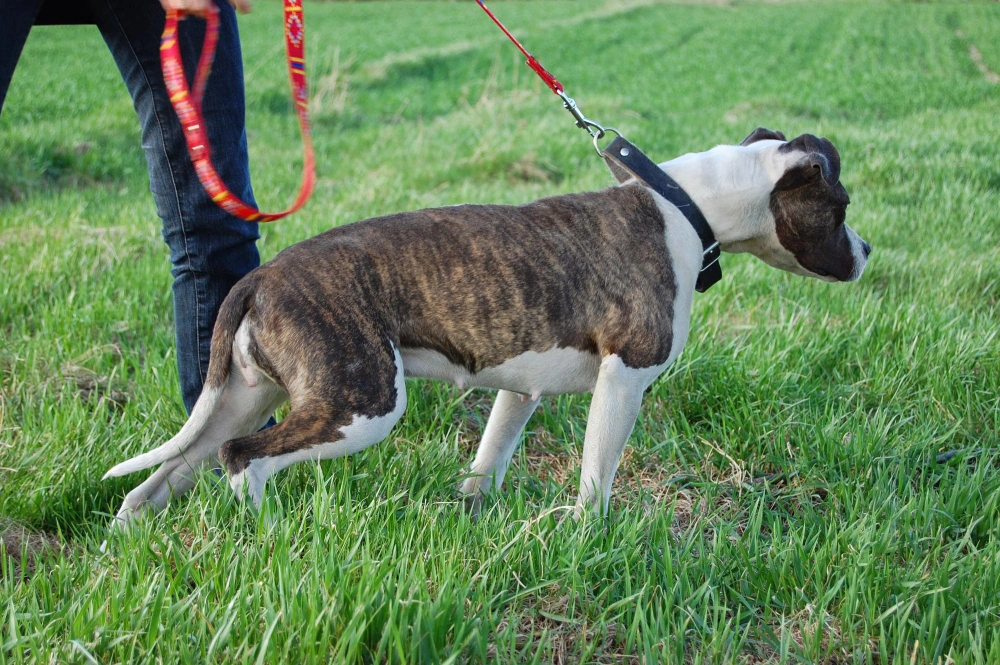
Frequently Asked Questions
Q: What type of leash works best for large dogs that pull heavily?
For large, strong pullers, the best option is typically a 6-foot training leash with dual handles paired with a front-clip harness. The combination provides maximum control while distributing pressure evenly. Look for leashes made from durable materials like nylon or hemp with reinforced stitching and heavy-duty hardware rated for your dog’s weight.
Q: Are retractable leashes good for dogs that pull?
Retractable leashes are generally not recommended for dogs that pull because they can actually encourage pulling behavior by rewarding it with more freedom. The constant tension can also make it difficult to teach proper leash manners. Stick with fixed-length leashes until your dog learns not to pull, then consider retractable options for trained dogs only.
Q: How long does it take to train a dog to stop pulling with the right leash?
Training time varies significantly based on the dog’s age, breed, personality, and consistency of training. With the right equipment and positive training methods, most dogs show improvement within 2-4 weeks of consistent practice. However, completely eliminating pulling behavior may take 2-6 months of regular training sessions. Patience and consistency are key to long-term success.
Q: Can I use a regular collar instead of a harness with an anti-pull leash?
It is not recommended to use regular collars with dogs that pull heavily, as this can damage the throat and trachea. The best approach is pairing your anti-pull leash with a front-clip harness, head collar, or no-pull harness that distributes pressure across the chest rather than the neck. This is both safer and more effective for reducing pulling behavior.
Q: What’s the difference between a training leash and a regular leash for pulling dogs?
Training leashes designed for pullers typically feature multiple attachment points, traffic handles for close control, and are made from materials that provide better grip and control. They’re often slightly shorter than regular leashes (4-6 feet) and may include features like reflective stitching or padded handles. Regular leashes lack these specialized features that make managing pulling behavior easier and safer.
Final Thoughts
Finding the best leash for dogs that pull is about more than just equipment, it is about creating a foundation for better communication and stronger bonding with your canine companion. The right leash, combined with consistent positive training, can transform stressful walks into enjoyable adventures that both you and your dog look forward to.
Remember that every dog is unique, and what works as the best leash for a pulling dog in one situation may not be ideal for another. Consider your dog’s size, strength, personality, and specific pulling triggers when making your selection. Do not be afraid to try different approaches or seek professional guidance if needed.
The investment in quality, eco-friendly leash equipment pays dividends in improved safety, better training outcomes, and reduced environmental impact. By choosing sustainable options, you are not only improving your dog’s behavior but also supporting more responsible manufacturing practices in the pet industry.
With the right equipment and approach, those frustrating pulling battles can become distant memories, replaced by peaceful, enjoyable walks that strengthen your relationship and provide great exercise for both of you. Your future self, and your dog, will thank you for taking the time to find the perfect solution for your walking needs.
Citation
Clouston, G. (2025, August 25). Best Dog Collars, Halters & Leads to Stop dog Pulling — Best Mate Dog training | Online dog training Without Treats. Best Mate Dog Training | Online Dog Training Without Treats. https://www.bestmatedogtraining.co.nz/dog-training-blog/best-dog-collars-and-leads-to-stop-dogs-pulling-on-the-lead
DiLonardo, M. J., & Ringo, A. (2024, October 17). The 11 best dog leashes, tested with real dogs. The Spruce Pets. https://www.thesprucepets.com/best-dog-leashes-4152097
Johnson, R. (2024, September 27). The best leashes for dogs that pull. Rocky Mountain Dog. https://rockymountaindog.ca/blogs/news/the-best-leashes-for-dogs-that-pull

